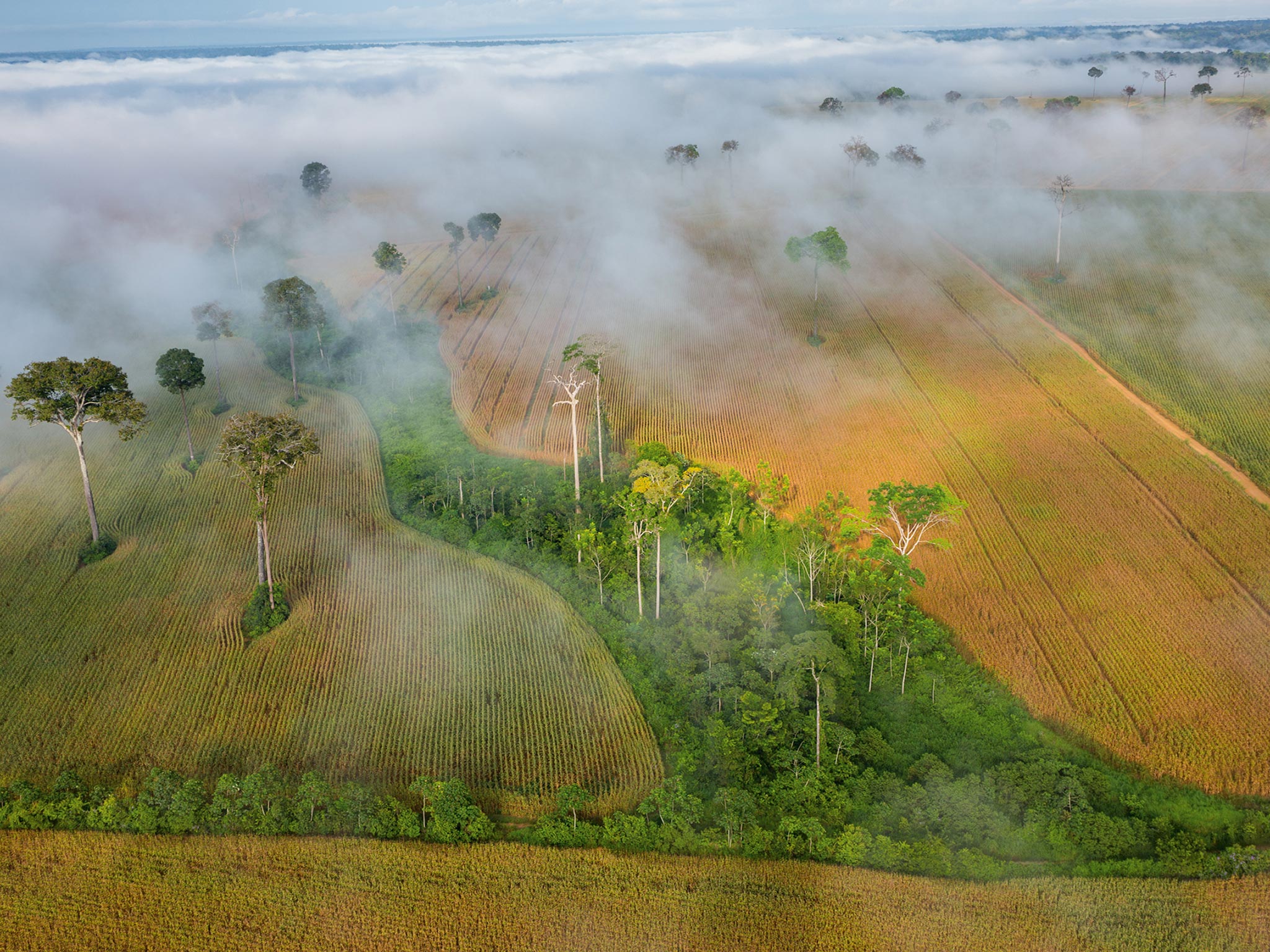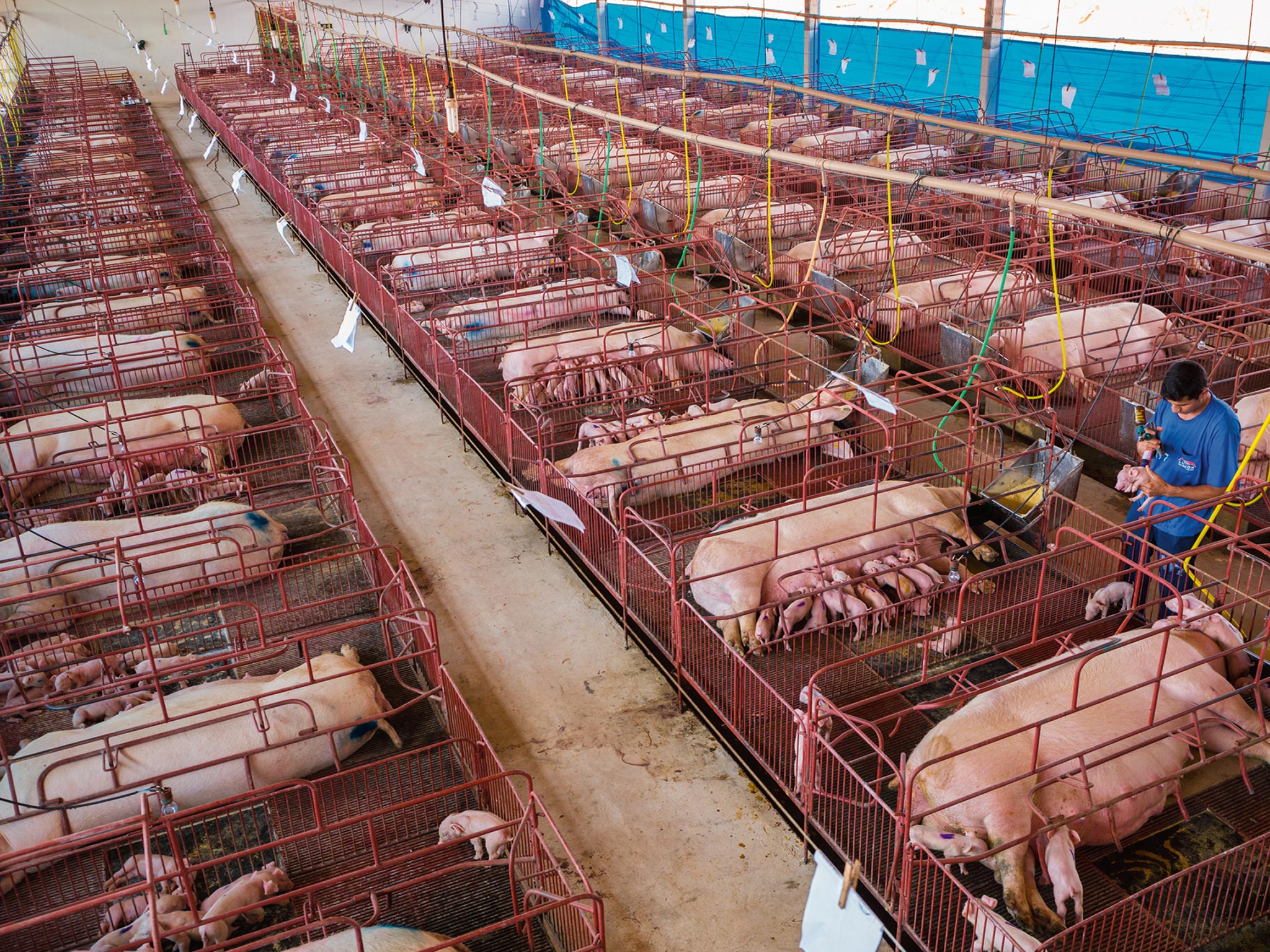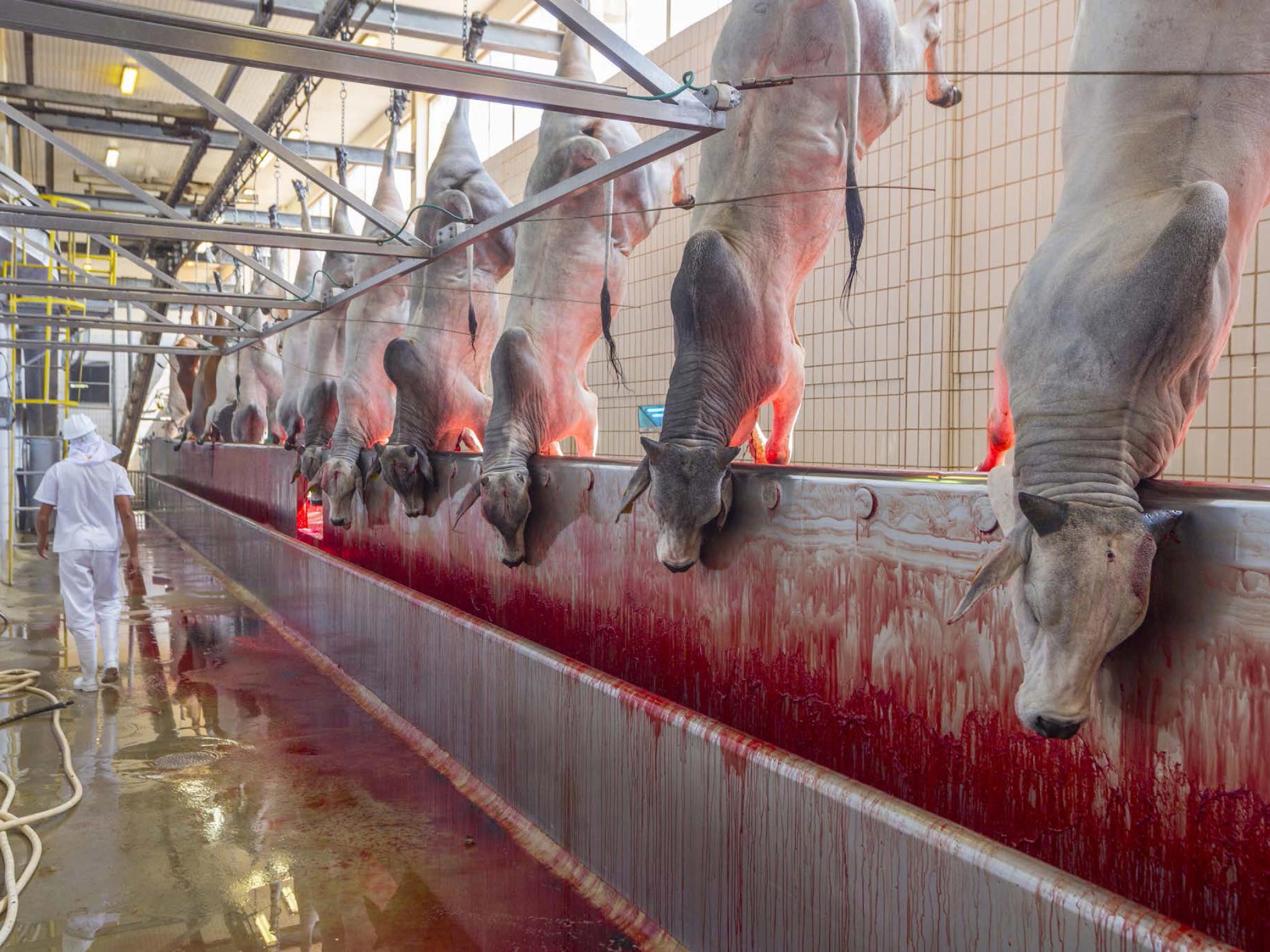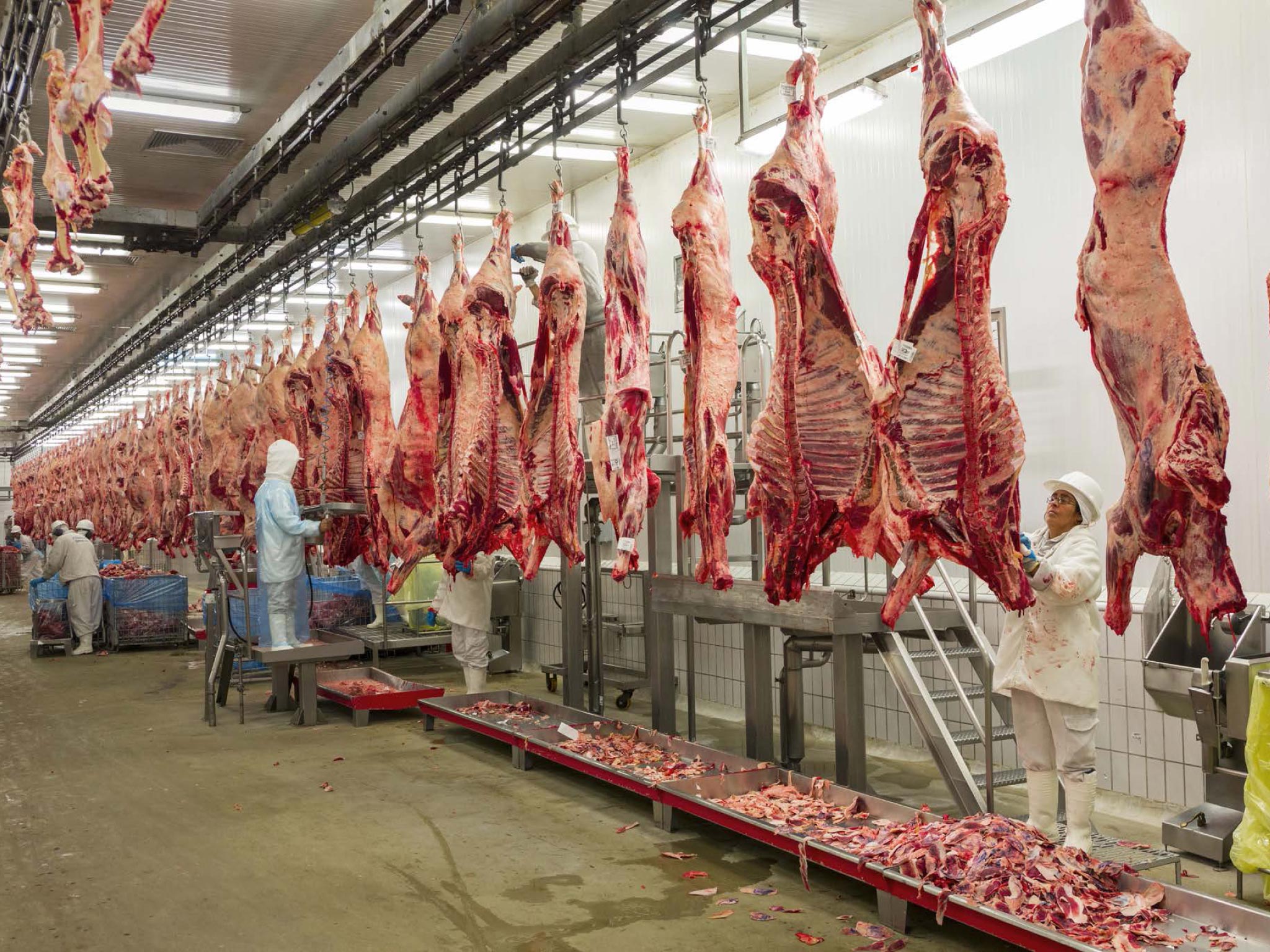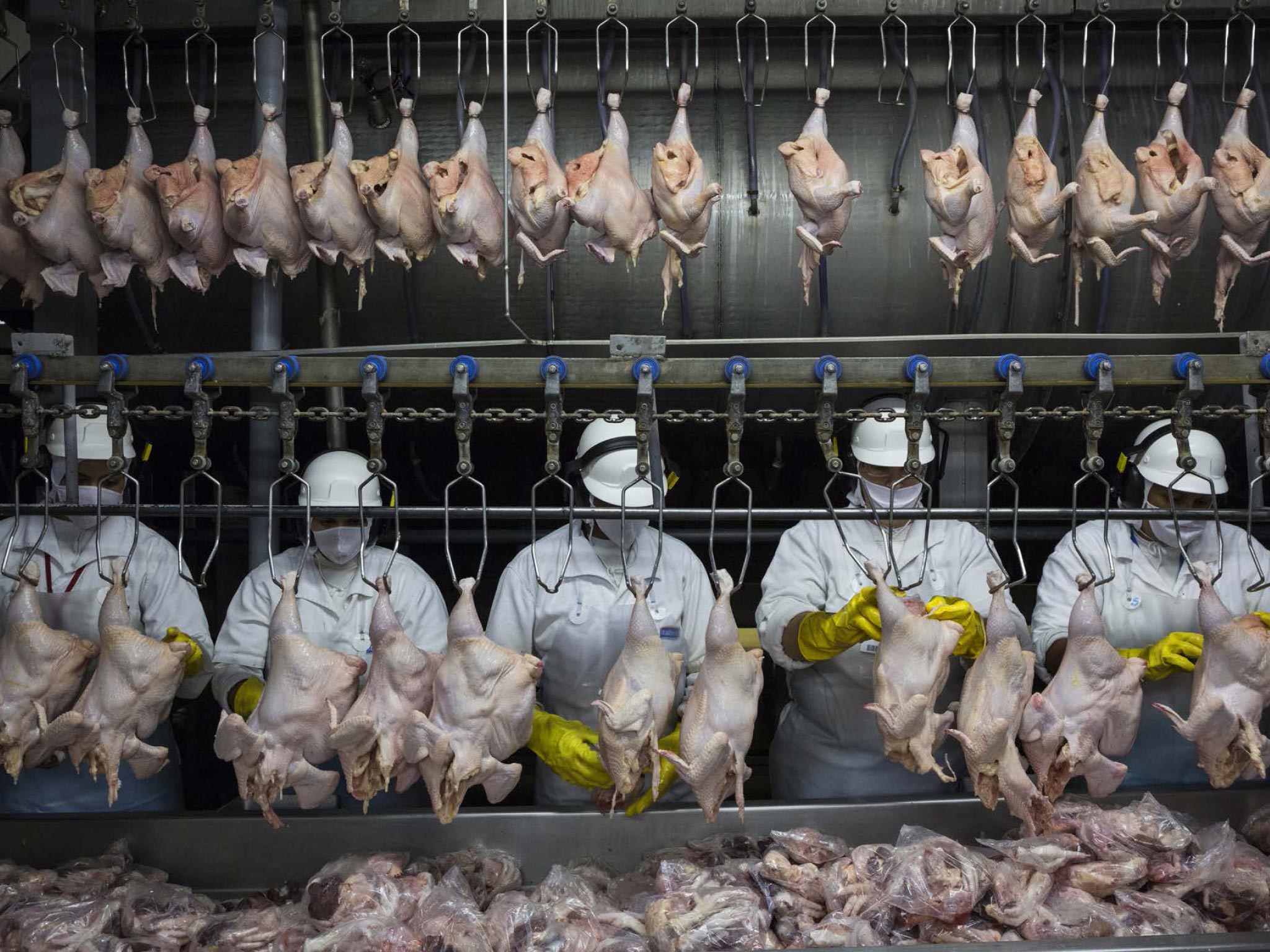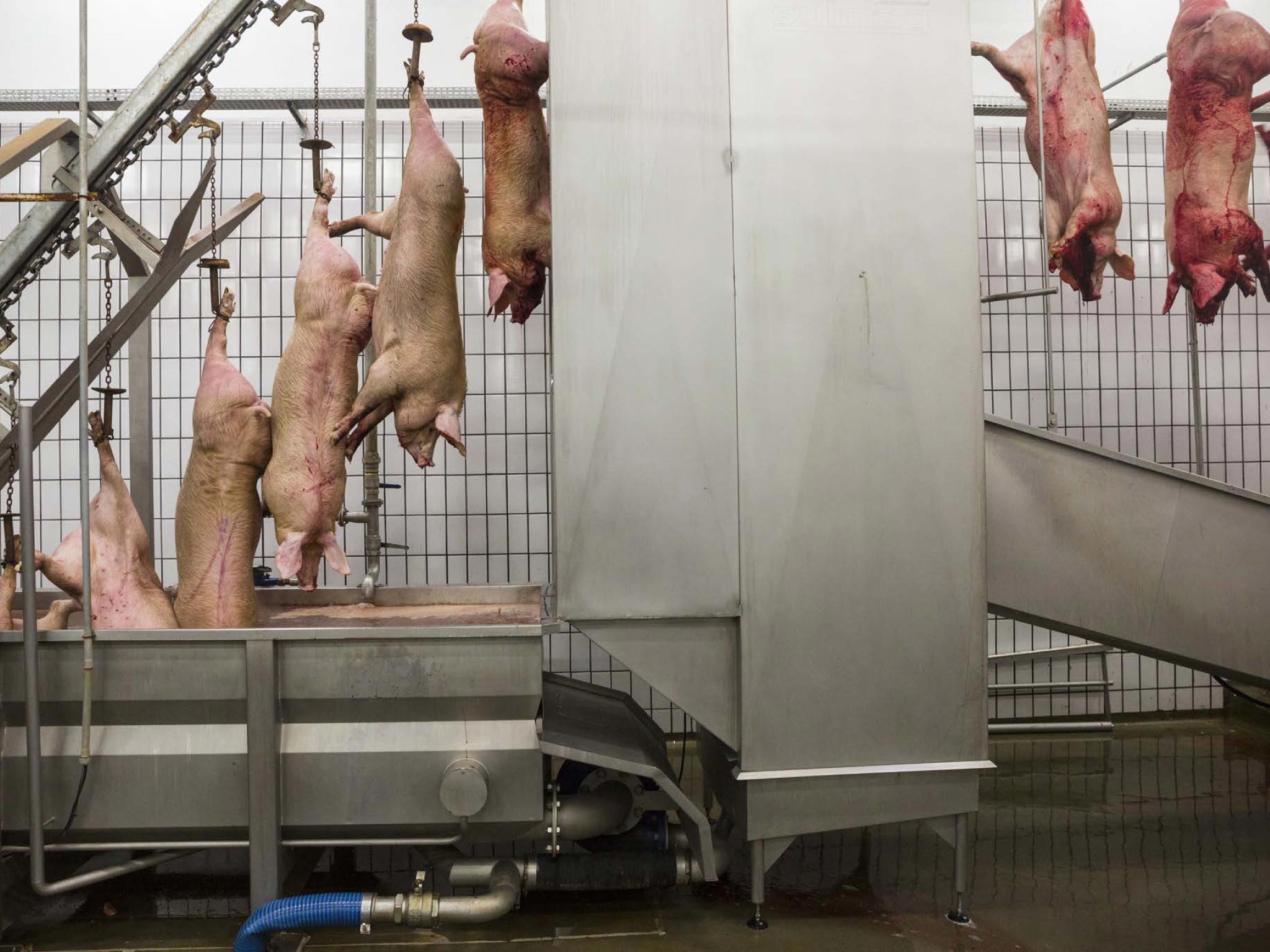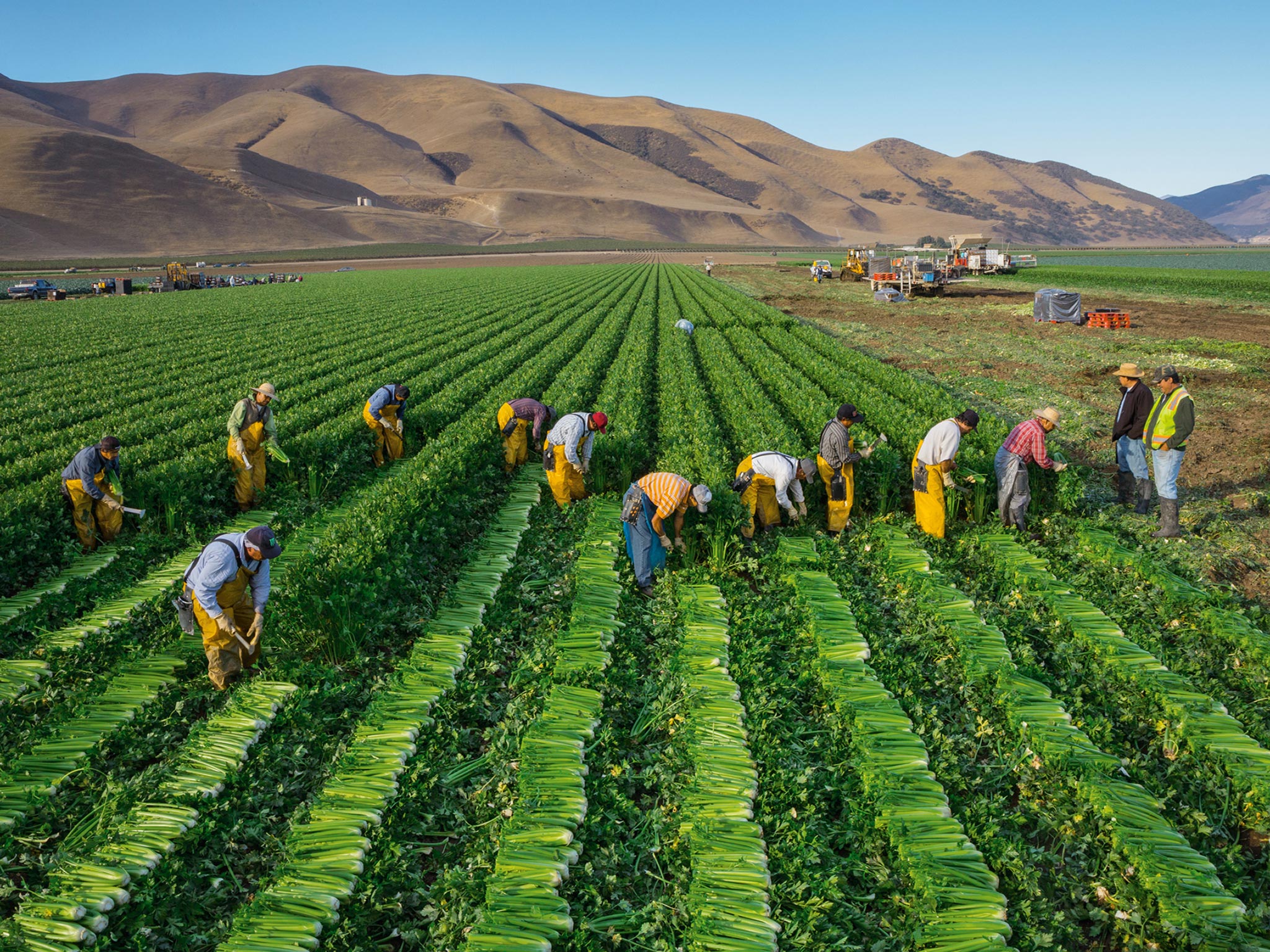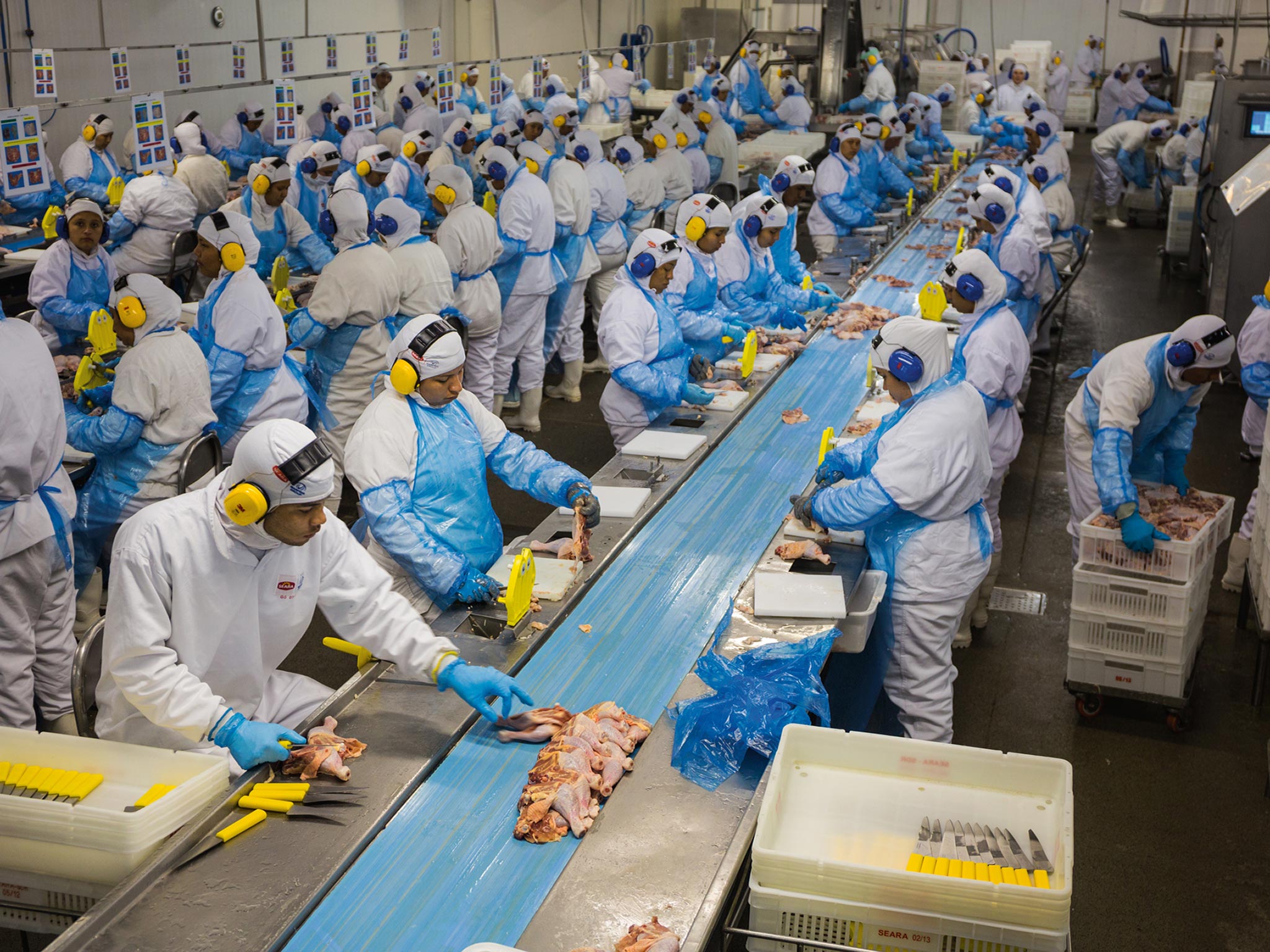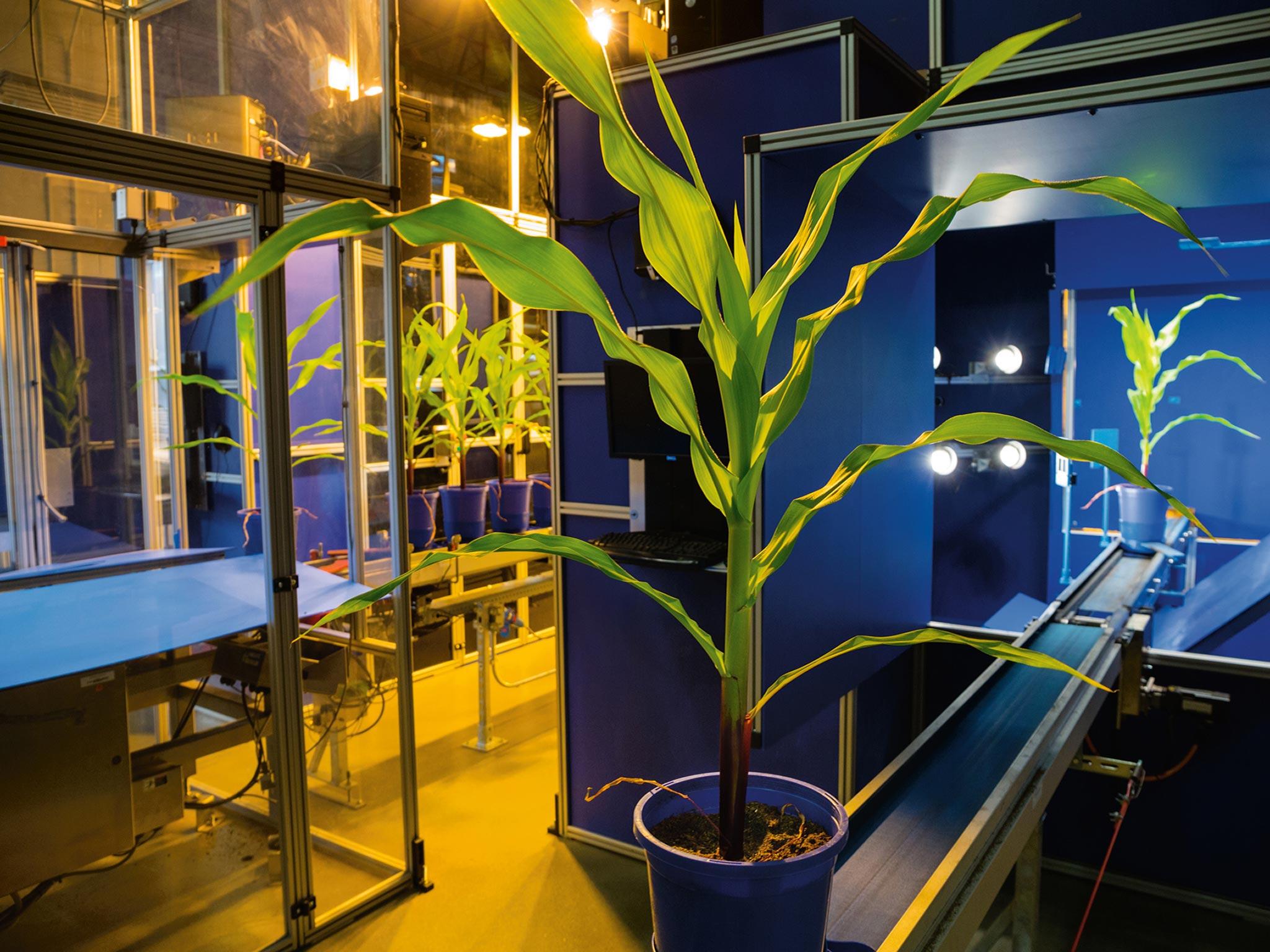Agriculture is among the greatest contributors to global warming, emitting more greenhouse gases than all our cars, trucks, trains, and airplanes combined—largely from methane released by cattle and rice farms, nitrous oxide from fertilized fields, and carbon dioxide from the cutting of rain forests to grow crops or raise livestock.
Farming is the thirstiest user of our precious water supplies and a major polluter, as runoff from fertilizers and manure disrupts fragile lakes, rivers, and coastal ecosystems across the globe. Agriculture also accelerates the loss of biodiversity. As we’ve cleared areas of grassland and forest for farms, we’ve lost crucial habitat, making agriculture a major driver of wildlife extinction.
The environmental challenges posed by agriculture are huge, and they’ll only become more pressing as we try to meet the growing need for food worldwide. We’ll likely have two billion more mouths to feed by mid-century—more than nine billion people. But sheer population growth isn’t the only reason we’ll need more food. The spread of prosperity across the world, especially in China and India, is driving an increased demand for meat, eggs, and dairy, boosting pressure to grow more corn and soybeans to feed more cattle, pigs, and chickens. If these trends continue, the double whammy of population growth and richer diets will require us to roughly double the amount of crops we grow by 2050.
Unfortunately the debate over how to address the global food challenge has become polarized, pitting conventional agriculture and global commerce against local food systems and organic farms. The arguments can be fierce, and like our politics, we seem to be getting more divided rather than finding common ground. Those who favor conventional agriculture talk about how modern mechanization, irrigation, fertilizers, and improved genetics can increase yields to help meet demand. And they’re right. Meanwhile proponents of local and organic farms counter that the world’s small farmers could increase yields plenty—and help themselves out of poverty—by adopting techniques that improve fertility without synthetic fertilizers and pesticides. They’re right too.
But it needn’t be an either-or proposition. Both approaches offer badly needed solutions; neither one alone gets us there. We would be wise to explore all of the good ideas, whether from organic and local farms or high-tech and conventional farms, and blend the best of both.
I was fortunate to lead a team of scientists who confronted this simple question: How can the world double the availability of food while simultaneously cutting the environmental harm caused by agriculture? After analyzing reams of data on agriculture and the environment, we proposed five steps that could solve the world’s food dilemma.
Step One: Freeze Agriculture’s Footprint
For most of history, whenever we’ve needed to produce more food, we’ve simply cut down forests or plowed grasslands to make more farms. We’ve already cleared an area roughly the size of South America to grow crops. To raise livestock, we’ve taken over even more land, an area roughly the size of Africa. Agriculture’s footprint has caused the loss of whole ecosystems around the globe, including the prairies of North America and the Atlantic forest of Brazil, and tropical forests continue to be cleared at alarming rates. But we can no longer afford to increase food production through agricultural expansion. Trading tropical forest for farmland is one of the most destructive things we do to the environment, and it is rarely done to benefit the 850 million people in the world who are still hungry. Most of the land cleared for agriculture in the tropics does not contribute much to the world’s food security but is instead used to produce cattle, soybeans for livestock, timber, and palm oil. Avoiding further deforestation must be a top priority.

Step Two: Grow More on Farms We’ve Got
Starting in the 1960s, the green revolution increased yields in Asia and Latin America using better crop varieties and more fertilizer, irrigation, and machines—but with major environmental costs. The world can now turn its attention to increasing yields on less productive farmlands—especially in Africa, Latin America, and eastern Europe—where there are “yield gaps” between current production levels and those possible with improved farming practices. Using high-tech, precision farming systems, as well as approaches borrowed from organic farming, we could boost yields in these places several times over.

We can no longer afford to increase food
production through agricultural expansion.
It would easier to feed the planet if more
of the crops we grew ended up in
human stomachs.

Increasing yields on underperforming farms could
significantly boost the world’s food supply.

We can be more efficient about
where we grow, what we grow, and how we grow.
PAN AND ZOOM ON MAPS

PASTURE
CROPLAND

Where Agriculture Exists
Nearly all new food production in the next 25 years will have to come from existing agricultural land.

FOOD
FEED AND FUEL

How Our Crops Are Used
Only 55 percent of food-crop calories directly nourish people. Meat, dairy, and eggs from animals raised on feed supply another 4 percent.

LOW
HIGH

Where Yields Could Improve
Improving nutrient and water supplies where yields are lowest could result in a 58 percent increase in global food production.
 The resumption of wool exports to China offers lessons for government-industry engagement
The resumption of wool exports to China offers lessons for government-industry engagement
Step Three: Use Resources More Efficiently
We already have ways to achieve high yields while also dramatically reducing the environmental impacts of conventional farming. The green revolution relied on the intensive—and unsustainable—use of water and fossil-fuel-based chemicals. But commercial farming has started to make huge strides, finding innovative ways to better target the application of fertilizers and pesticides by using computerized tractors equipped with advanced sensors and GPS. Many growers apply customized blends of fertilizer tailored to their exact soil conditions, which helps minimize the runoff of chemicals into nearby waterways.
Organic farming can also greatly reduce the use of water and chemicals—by incorporating cover crops, mulches, and compost to improve soil quality, conserve water, and build up nutrients. Many farmers have also gotten smarter about water, replacing inefficient irrigation systems with more precise methods, like subsurface drip irrigation. Advances in both conventional and organic farming can give us more “crop per drop” from our water and nutrients.
Step Four: Shift Diets
It would be far easier to feed nine billion people by 2050 if more of the crops we grew ended up in human stomachs. Today only 55 percent of the world’s crop calories feed people directly; the rest are fed to livestock (about 36 percent) or turned into biofuels and industrial products (roughly 9 percent). Though many of us consume meat, dairy, and eggs from animals raised on feedlots, only a fraction of the calories in feed given to livestock make their way into the meat and milk that we consume. For every 100 calories of grain we feed animals, we get only about 40 new calories of milk, 22 calories of eggs, 12 of chicken, 10 of pork, or 3 of beef. Finding more efficient ways to grow meat and shifting to less meat-intensive diets—even just switching from grain-fed beef to meats like chicken, pork, or pasture-raised beef—could free up substantial amounts of food across the world. Because people in developing countries are unlikely to eat less meat in the near future, given their newfound prosperity, we can first focus on countries that already have meat-rich diets. Curtailing the use of food crops for biofuels could also go a long way toward enhancing food availability.
A World Demanding More
By 2050 the world’s population will likely increase by more than 35 percent.

To feed that population, crop production will need to double.

Why? Production will have to far outpace population growth as the developing world grows prosperous enough to eat more meat.

Step Five: Reduce Waste
An estimated 25 percent of the world’s food calories and up to 50 percent of total food weight are lost or wasted before they can be consumed. In rich countries most of that waste occurs in homes, restaurants, or supermarkets. In poor countries food is often lost between the farmer and the market, due to unreliable storage and transportation. Consumers in the developed world could reduce waste by taking such simple steps as serving smaller portions, eating leftovers, and encouraging cafeterias, restaurants, and supermarkets to develop waste-reducing measures. Of all of the options for boosting food availability, tackling waste would be one of the most effective.
Taken together, these five steps could more than double the world’s food supplies and dramatically cut the environmental impact of agriculture worldwide. But it won’t be easy. These solutions require a big shift in thinking. For most of our history we have been blinded by the overzealous imperative of more, more, more in agriculture—clearing more land, growing more crops, using more resources. We need to find a balance between producing more food and sustaining the planet for future generations.
This is a pivotal moment when we face unprecedented challenges to food security and the preservation of our global environment. The good news is that we already know what we have to do; we just need to figure out how to do it. Addressing our global food challenges demands that all of us become more thoughtful about the food we put on our plates. We need to make connections between our food and the farmers who grow it, and between our food and the land, watersheds, and climate that sustain us. As we steer our grocery carts down the aisles of our supermarkets, the choices we make will help decide the future.














